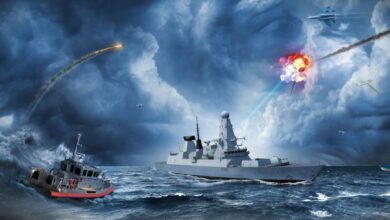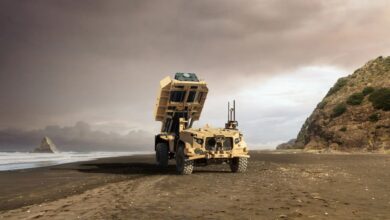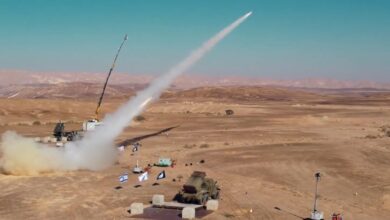The Royal Navy will install the DragonFire directed-energy weapon system aboard warships by 2027 in response to increased airborne threats, the British government announced.
The accelerated fielding pushes employment back five years from its original schedule in 2032, as the government requires more weapons to combat missiles and drones like those fired by Houthi rebels in the Red Sea.
DragonFire is a laser capable of neutralizing aerial targets traveling at the speed of light. The weapon is considered efficient because each high-intensity beam it projects to down targets costs less than 10 pounds ($12).
Its prototype was unveiled in 2017 and was then enhanced by London’s Defence Science and Technology Laboratory in partnership with MBDA, QinetiQ, and Leonardo.
“We recognise this cutting-edge UK laser weapons technology as highly relevant and the need to accelerate it into service on board our ships at the earliest opportunity,” Royal Navy Above Water Battlespace Head Capt. Matt Ryder explained.
“Noting the quantity and varied sophistication of air and missile threats seen in the Southern Red Sea, we see a very relevant and current example of where laser weapons could provide an additional layer of defence to protect shipping, at a potentially much lower cost per shot and without the inherent onboard magazine and silo capacity constraints associated with interceptor missiles.”
DragonFire Progress
The announcement followed DragonFire’s latest trial in Scotland in January, in which the system achieved the UK’s first high-power firing of a laser weapon against aerial targets.
DragonFire’s low-power test commenced in 2022, followed by the weapon’s first full-capacity live-fire demonstration in Porton Down.

“In a more dangerous world, our approach to procurement is shifting with it. We need to be more urgent, more critical and more global,” British Defence Secretary Grant Shapps remarked during the DragonFire’s fielding rescheduling notice.
“Our widespread reforms will deliver the latest kit and weaponry for our Armed Forces faster and help identify export opportunities that can boost the UK economy.
“DragonFire shows the best of the UK at the forefront of military technology, and we will not delay in getting it in the hands of our military to face down the threats we’re facing.”
Expanding Naval Firepower
Simultaneously, the UK assured that the Royal Navy’s existing missile systems such as the Sea Viper and Sea Ceptor will remain “highly relevant” and “core component” of the agency’s air defense assets as the DragonFire enters the service.
Both warheads were recently used by London’s destroyers to counter Houthi drones and missiles in the Red Sea as part of the US-led Operation Prosperity Guardian prior to the DragonFire’s fielding announcement.












